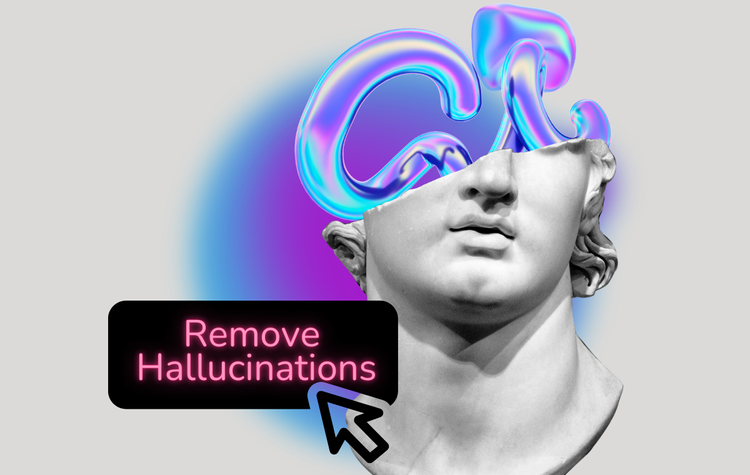Chatbot vs Conversational AI: Old Versus New Technology
Chatbots are typically older and provide a worse user experience. Conversational AI chatbots, especially those that use generative AI, are better user experiences. They can understand extremely complex questions, provide highly relevant answers, and detect/respond in 100 different languages.

Chatbots and Artificial Intelligence (AI), and specifically conversational AI, have permanently changed the way businesses interact with their customers.
But what's the difference between a chatbot and a conversational AI?
This article explores the differences between a chatbot vs. conversational AI. Chatbots without conversational AI are typically older and provide a much more limited user experience. They can also be much more difficult to maintain. Chatbots with conversational AI provide a much better user experience and are easier to maintain.
Specifically, chatbots with generative AI are the latest chatbot technology. They can understand extremely complex questions, provide highly relevant and accurate answers, and can chat in 100 different languages.
What is a Chatbot?
Chatbots allow users to interact with digital platforms via text or verbal exchanges.
Chatbots have existed for approximately a decade already. Some people consider conversational AI to be a proper subset of chatbots. For this article, we will make a distinction between a chatbot with with conversational AI vs chatbot without conversational AI.
Chatbots without Conversational AI
There are 2 types of chatbots without conversational AI: rule-based bots and keyword detection bots.
Rule-Based Chatbots
The earliest type of chatbots utilized rules or decision trees. They guide users through a predetermined set of options and responses.
Rule-based chatbots provide users with a fixed set of options to choose from, and pre-determined responses. They severely limit the user experience. Customers can find these chatbots very frustrating, because:
- The pre-determined menu might not include their problem.
- The user experience might result in repeated and/or endless loops.
- They cannot explicitly type in their problem (because they can only click on the pre-determined options).
- They often need to escalate to human agents. As a result, they feel like the rule-based chatbot wasted their time.
Rule-based chatbots can also be very difficult for brands to create and maintain.
Many brands still use rule-based chatbots. You have undoubtedly interacted with interacted with some of them and have found them frustrating to use.
Keyword Detection Chatbots
Keyword matching chatbots allow users to enter their questions. These chatbots then attempt to detect the presence of keywords within user questions. When the chatbot detects a keyword, the chatbot responds with a pre-determined response (or set of responses) for the keyword.
Keyword detection chatbots allow customers to key in their exact question, creating a slightly better user experience than rule-based chatbots.
However, keyword detection chatbots can still frustrate users. Keyword detection chatbots:
- Fail when a predetermined keyword is not in the user's question. This might lead to repeated responses of, "I'm sorry, I didn't understand your question. Please try again."
- Might not be able to understand the nuance or context behind a given keyword and still provide an incorrect answer.
- Might fail when a user's question contains 2 or more keywords.
Chatbots with Conversational AI
Conversational AI utilizes Natural Language Processing (NLP) and Natural Language Understanding (NLU) to understand the text provided by users. This technologies transform communication from an exchange into a more dynamic, intelligent and user-friendly experience.
NLP or Question Matching Chatbots
These chatbots allow the user to enter their full question. The chatbots use NLP technology to determine to understand the meaning/intent of the user's question. Then the chatbot matches the user's questions to a set a pre-determine questions and their associated answers.
NLP chatbots are a better user experience than both keyword matching chatbots and rule-based chatbots. They are better at understanding more complex questions, and they do not depend on the mere presence of keywords in questions.
NLP chatbots can still frustrate users. The frustration arises from the fact that they match questions with a pre-defined list of questions and answers. An NLP chatbot will often provide the following response: "I think you were asking a question related to the following... Here is a related answer."
An NLP chatbot can only match user questions to the pre-defined list of questions. Especially with very complex or nuanced questions, the chatbot might incorrectly match the user's question to the pre-defined list. Also, the user's question can exceed the scope of the pre-defined list. Both result in an irrelevant chatbot response.
NLP chatbots require the brand to maintain a list of frequently asked questions and the correct answer. NLP chatbots may also require the brand to write the same question in many different ways. This creates both an implementation burden and maintenance burden for brands.
Generative AI Chatbots
Generative AI chatbots are the most advanced type of conversational AI chatbot.
Generative AI chatbots use Large Language Models ("LLMs") to understand questions (regardless of complexity) and compose original and relevant answers. Some people also refer to generative AI chatbots as GPT chatbots.
Generative AI chatbots also maintain the context of the conversation and converse with end users in a natural, human-like flow. They can also detect foreign languages in real time and respond in the same foreign language.
As a result, generative AI chatbots are a much better experience for end users. Their ability to generate highly relevant, context sensitive responses will accelerate mean time to resolution, improve CSAT scores, and improve NPS.
Generative AI chatbots also improve customer service efficiency. They increase the deflection rate. These types of chatbots do not require a list of keywords or common questions. These chatbots can ingest enterprise data from a large, distributed proprietary knowledge base, including websites, wikis, product documentation, and prior responses from help desks.
Chatbots vs Conversational AI Chatbots: The Final Verdict
Imagine comparing a 2010 Chevy Equinox to a 2023 Tesla Model Y.
The 2010 Chevy Equinox still works, and it contained a lot of cutting edge technology for that time period. The user experience may sometimes be frustrating. It may also require a lot more maintenance.
The 2023 Tesla Model Y has the the latest cutting edge technology. It's a much better end user experience, and it requires much less maintenance than the 2010 Chevy Equinox.
Chatbots without conversational AI are like the 2010 Chevy Equinox. Chatbots with conversational AI (and especially generative AI) are like the 2023 Tesla Model Y.
Introducing Gleen AI: A Powerful Generative AI Chatbot Solution
Gleen AI stands out as an innovative solution that harnesses the power of generative AI to provide tailored and intelligent responses.
Unlike chatbots or some other conversational AI systems, Gleen AI goes beyond matching user queries with predefined answers. It crafts responses for unexpected inquiries.
Unlike other generative AI chatbots, Gleen AI doesn't hallucinate. It provides highly accurate and relevant responses.
Are you ready to elevate your customer support experience? Create a free, generative AI chatbot from Gleen AI and reimagine what's achievable in chatbot interactions.



